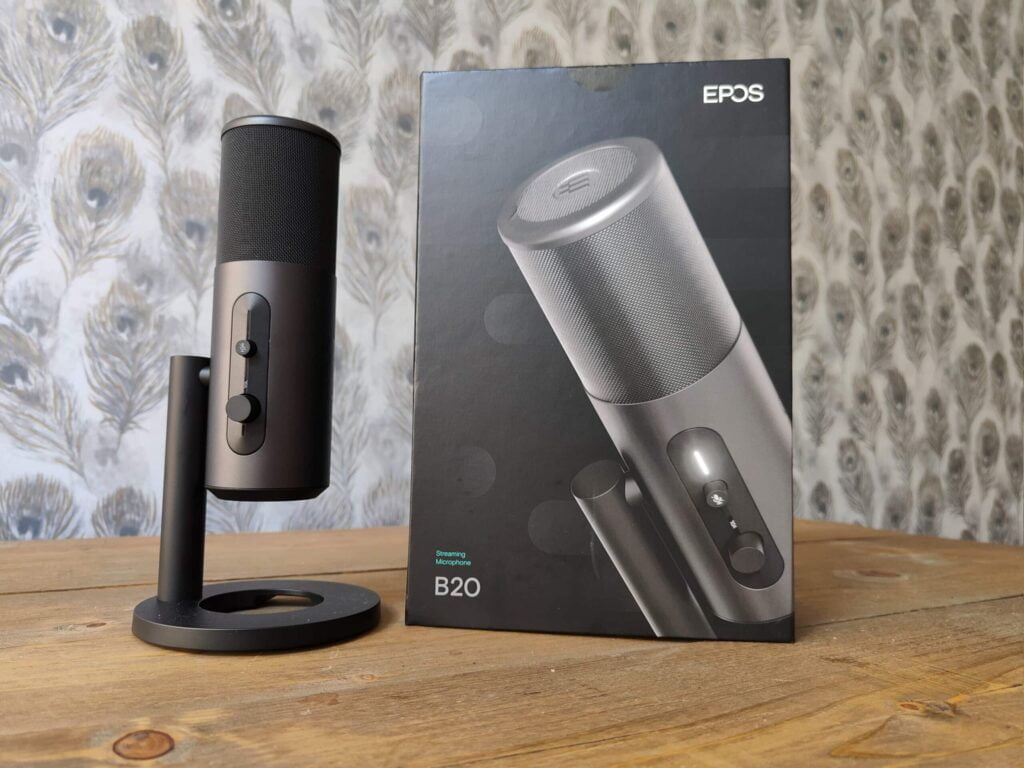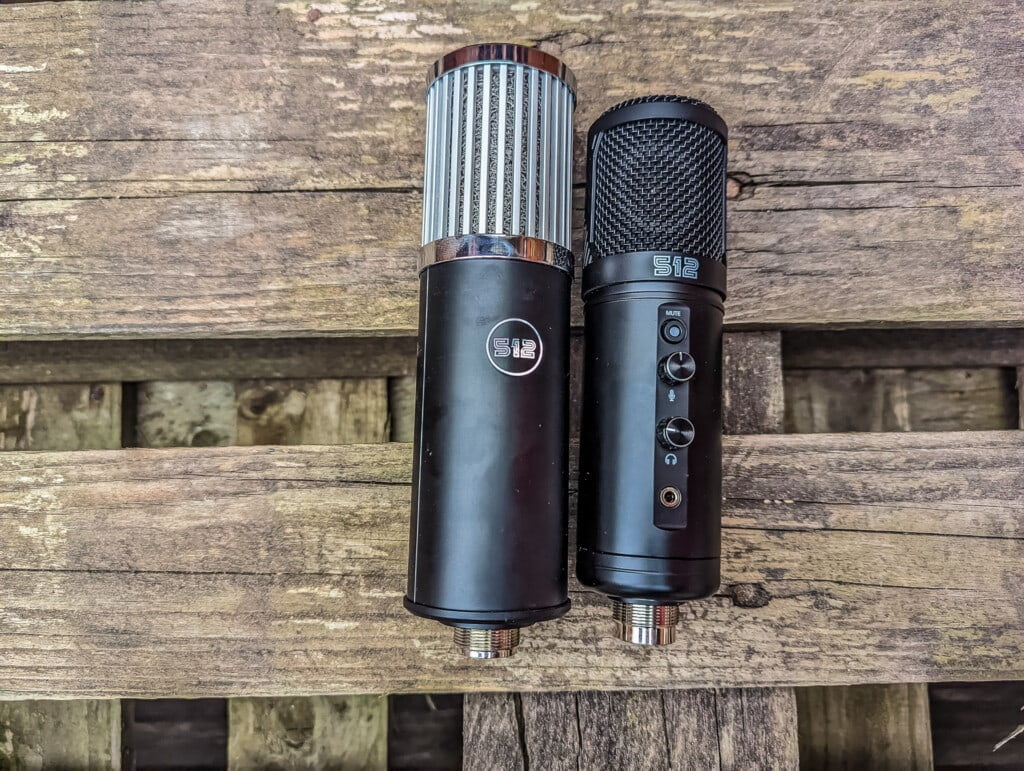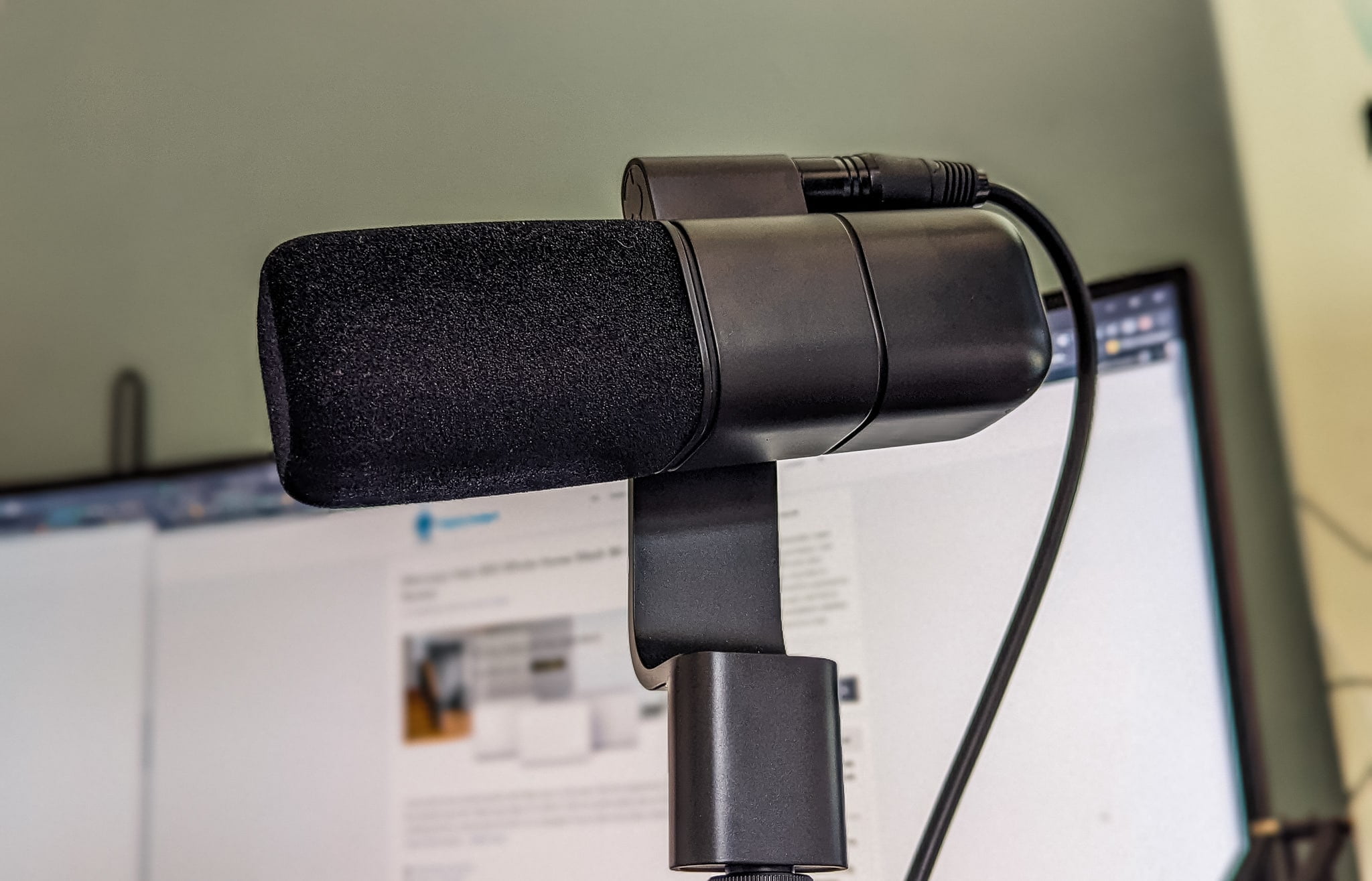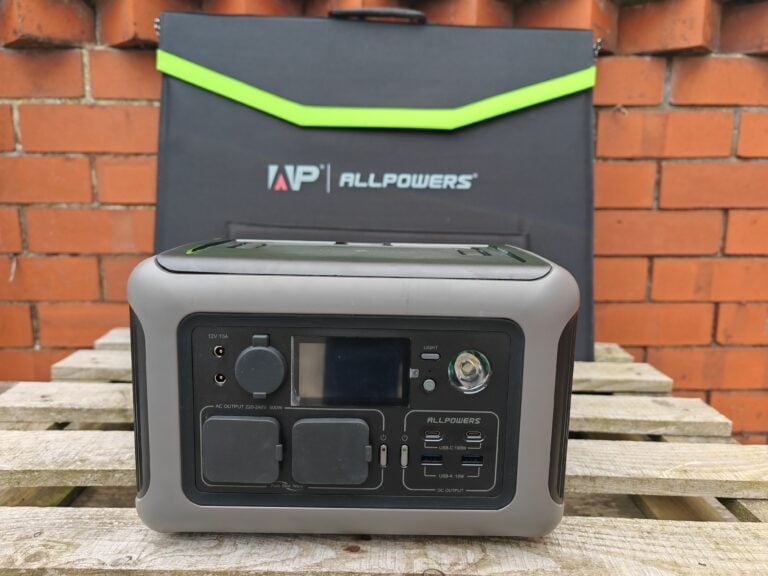Any links to online stores should be assumed to be affiliates. The company or PR agency provides all or most review samples. They have no control over my content, and I provide my honest opinion.
When it comes to choosing the correct microphone, sensitivity is a crucial aspect to consider. It determines the level of sound pressure that a microphone can accurately detect and convert into an electrical signal. Without the appropriate sensitivity, a microphone may struggle to accurately record or amplify sounds, and it may fail to capture delicate nuances in the sound source. In this guide, we will delve into the top 10 microphone sensitivities and their correlation with voice and recording quality, applications in live sound, and frequently encountered issues.
Microphone Reviews

- Cherry UM 6.0 Advanced USB Microphone Review
- Logitech for Creators Blue Sona Microphone Review
- 512 Audio Tempest USB-C Microphone Review
- Roccat Torch USB Microphone Review
- 512 Audio Skylight Review
- EPOS B20 Review
Understanding Mic Sensitivity: The Basics

Mic sensitivity refers to the microphone’s ability to detect and respond to sound signals. It measures how effectively a microphone converts sound waves into electrical signals. Sensitivity is typically expressed as a decibel (dB) value and indicates the microphone’s responsiveness to sound pressure levels.
A microphone with high sensitivity can pick up even low-level sounds and produce a strong electrical signal. Such microphones are ideal for capturing quiet or distant sources, ensuring that no details or nuances are lost. On the other hand, a microphone with low sensitivity requires higher sound pressure levels to produce the same output signal, making it more suitable for loud or close sources.
The sensitivity of a microphone is an important consideration in various applications. In recording studios, a highly sensitive microphone is preferred to accurately capture vocals and instruments with exceptional clarity and detail. Onstage performances, especially in theatre or live music settings, often require microphones with lower sensitivity to prevent feedback and minimize ambient noise pickup.
Understanding the microphone’s sensitivity helps in selecting the right tool for specific recording or sound reinforcement tasks. It ensures that the microphone can effectively capture the intended sound source without distortion, noise, or signal loss.
How Mic Sensitivity is Measured
Mic sensitivity is measured using a standardised method called the sensitivity rating or sensitivity specification. The sensitivity of a microphone is typically expressed in decibels (dB) and is measured relative to a specific reference level.
The most common measurement technique involves applying a known sound pressure level (SPL) to the microphone and measuring the resulting output voltage or signal level. The reference sound pressure level used for microphone sensitivity measurement is 94 dB SPL, which corresponds to a sound pressure level of 0.002 microbars.
During the measurement, the microphone is placed in a controlled acoustic environment, often in an anechoic chamber or a semi-anechoic room, to minimize reflections and external noise. A calibrated sound source, such as a pistonphone or an acoustic calibrator, is used to generate a known SPL.
The microphone under test is positioned at a specific distance from the sound source, usually 1 meter, and the sound is gradually increased to the reference level of 94 dB SPL. The resulting electrical output of the microphone is then measured and recorded. The difference between the reference level and the microphone’s output level is calculated, and that value represents the microphone’s sensitivity rating.
The sensitivity of a microphone is typically expressed in dBV/Pa or dBV/µbar, which indicates the output voltage level produced by the microphone for a given sound pressure level. Some microphones may also specify their sensitivity in millivolts per Pascal (mV/Pa) or millivolts per microbar (mV/µbar).
It’s important to note that microphone sensitivity is just one factor to consider when choosing a microphone. Other factors like frequency response, self-noise, and polar pattern also play a significant role in determining the overall performance and suitability of a microphone for a specific application.
The Top 10 Mic Sensitivities Ranked
While there is not a universally agreed-upon list of what sensitivity is best for each application, a rough guide to the top 10 mic sensitivities would be:
- Ultra-high sensitivity (e.g., -30 dBV/Pa or higher): These highly sensitive microphones are often used in specialized applications such as recording quiet acoustic instruments, capturing ASMR (Autonomous Sensory Meridian Response) content, or picking up distant sounds in field recording.
- High sensitivity (e.g., -40 dBV/Pa to -30 dBV/Pa): These microphones are suitable for studio recordings, podcasting, broadcasting, and capturing vocals or instruments with great detail and accuracy. They are commonly found in professional recording studios.
- Medium sensitivity (e.g., -50 dBV/Pa to -40 dBV/Pa): Microphones with medium sensitivity are versatile and find applications in various scenarios. They can be used for live performances, sound reinforcement, home studios, and general recording tasks.
- Low sensitivity (e.g., -60 dBV/Pa to -50 dBV/Pa): These microphones are ideal for high-volume sound sources like live concerts, rock performances, or close-miking loud instruments such as drums or guitar amplifiers. They are designed to handle high sound pressure levels without distortion.
- Dynamic microphones: Dynamic microphones typically have moderate sensitivity and are known for their durability and ability to handle high sound pressure levels. They are commonly used in live sound reinforcement, on-stage performances, and broadcasting.
- Condenser microphones: Condenser microphones can have a wide range of sensitivities, depending on the model. They are often favored for studio recordings, capturing vocals, acoustic instruments, and detailed sound sources.
- Ribbon microphones: Ribbon microphones are known for their smooth and natural sound reproduction. They generally have lower sensitivities and are favored for recording applications such as vocals, strings, and brass instruments.
- Lavalier microphones: Lavalier or lapel microphones are designed for hands-free operation and often have medium sensitivities. They are commonly used in broadcasting, interviews, presentations, and theatrical performances.
- Shotgun microphones: Shotgun microphones have a narrow pickup pattern and are highly directional. They are often employed in film production, television, wildlife recording, and other situations where isolating sound sources is crucial.
- Boundary microphones: Boundary or PZM (Pressure Zone Microphone) types have a flat surface and are placed on a boundary, such as a table or wall. They can have varying sensitivities and find applications in conference rooms, boardrooms, stage productions, and recording ensembles.
Mic Sensitivity vs. Other Mic Features
Mic sensitivity is not the only factor to consider when selecting a microphone. Other features such as frequency response, polar patterns, and impedance also play a significant role in determining a microphone’s performance. Frequency response refers to the range of frequencies that a mic can accurately pick up and reproduce. Polar patterns determine the directionality of a microphone and how it picks up sound. Impedance refers to the resistance that a microphone offers to the electrical signal, and it affects the output level and quality.
How to Choose the Right Mic Sensitivity
Choosing the right mic sensitivity depends on the intended use of the microphone. For example, condenser mics with high sensitivity are ideal for capturing vocals and acoustic guitar, while dynamic mics with lower sensitivity are preferable for live sound and amplified instruments. Ribbon mics with moderate sensitivity are suitable for recording high SPL sources, such as guitar amplifiers and drums. Contact mics with low sensitivity are ideal for picking up vibrations on acoustic instruments, and laser mics are suitable for long-range detection. Consider the environment, sound source, and intended application when selecting the mic sensitivity.
Common Mic Sensitivity Problems and Solutions
Common problems associated with mic sensitivity include background noise, feedback, and distortion. Background noise occurs when the microphone picks up unwanted sounds from the environment, such as traffic or air conditioning. Feedback occurs when the mic picks up its own output, resulting in a screeching sound. Distortion happens when the sound source exceeds the mic’s SPL handling capacity, causing the sound to become distorted. Solutions to these problems include using noise-cancelling techniques, adjusting the microphone placement and orientation, and using a mic with a higher SPL handling capacity.
Advanced Mic Sensitivity Techniques
Advanced mic sensitivity techniques include using a preamp to increase the microphone’s gain, adjusting the microphone’s polar pattern to focus on specific sound sources, and using a compressor to reduce dynamic range. A preamp amplifies the electrical signal output of the microphone, resulting in a higher gain level. Changing the polar pattern of the microphone can alter its sensitivity to sounds from different directions, allowing for more precise sound capture. A compressor can reduce the dynamic range of the sound source, resulting in a more even output level.
Mic Sensitivity and Voice Quality
Mic sensitivity plays a crucial role in determining the quality of recorded or amplified vocals. High sensitivity condenser mics can capture subtle nuances in a singer’s voice, resulting in a more detailed and expressive sound. Lower sensitivity dynamic mics can provide a warmer, more natural sound that is ideal for live performances. Using the right mic sensitivity can enhance the clarity, tone, and dynamic range of vocal recordings.
Mic Sensitivity and Recording Quality
Mic sensitivity is an essential factor in determining the quality of recorded sound. High sensitivity mics can capture low-level sounds, resulting in a more detailed and nuanced recording. However, high sensitivity also makes the mic more susceptible to background noise and distortion. Lower sensitivity mics can provide a more focused and direct recording, but they may miss subtle nuances in the sound source. Selecting the right mic sensitivity is crucial for achieving optimal recording quality.
Mic Sensitivity and Live Sound Applications
In live sound applications, mic sensitivity plays a significant role in determining the overall sound quality. Choosing the right mic sensitivity can enhance the clarity, tone, and volume of amplified sound. High sensitivity condenser mics are ideal for capturing the nuances of acoustic instruments and vocals, while lower sensitivity dynamic mics are preferable for amplified instruments and live performances. Using the right mic sensitivity can help to reduce feedback, minimize background noise, and provide a more natural and balanced sound.
The Importance of Mic Sensitivity
Mic sensitivity is a critical factor in selecting the right microphone for different applications. Understanding mic sensitivity and how it relates to other mic features, recording quality, voice quality, and live sound applications is essential for achieving optimal performance. By selecting the right mic sensitivity, you can enhance sound quality, capture the nuances of the sound source, and achieve more natural and balanced recordings and amplifications. Therefore, it is crucial to consider mic sensitivity when choosing a microphone for your needs.
I am James, a UK-based tech enthusiast and the Editor and Owner of Mighty Gadget, which I’ve proudly run since 2007. Passionate about all things technology, my expertise spans from computers and networking to mobile, wearables, and smart home devices.
As a fitness fanatic who loves running and cycling, I also have a keen interest in fitness-related technology, and I take every opportunity to cover this niche on my blog. My diverse interests allow me to bring a unique perspective to tech blogging, merging lifestyle, fitness, and the latest tech trends.
In my academic pursuits, I earned a BSc in Information Systems Design from UCLAN, before advancing my learning with a Master’s Degree in Computing. This advanced study also included Cisco CCNA accreditation, further demonstrating my commitment to understanding and staying ahead of the technology curve.
I’m proud to share that Vuelio has consistently ranked Mighty Gadget as one of the top technology blogs in the UK. With my dedication to technology and drive to share my insights, I aim to continue providing my readers with engaging and informative content.







